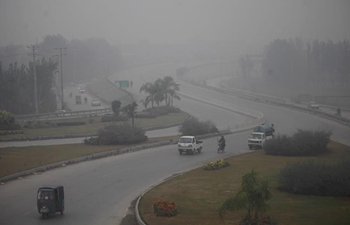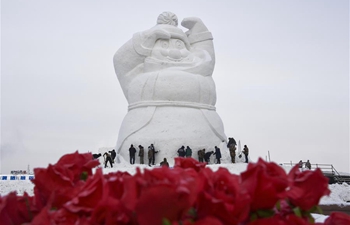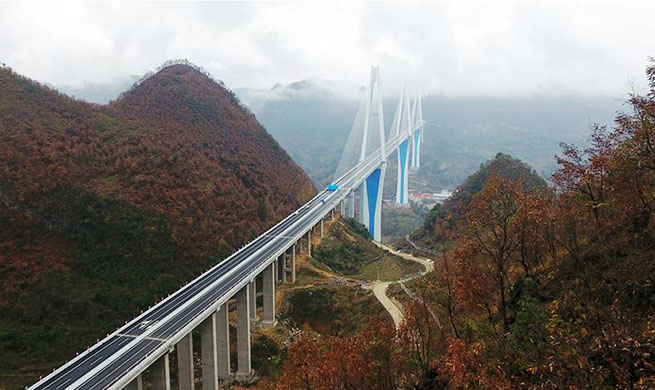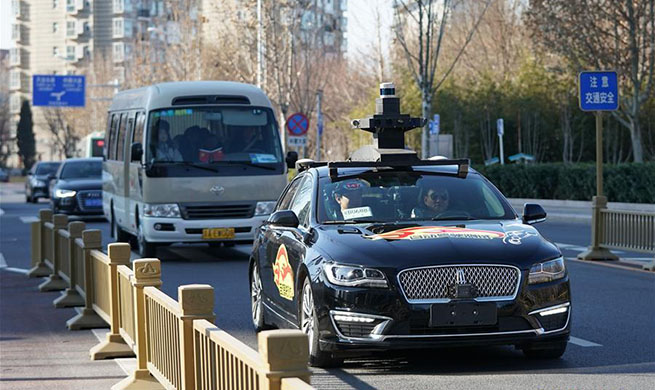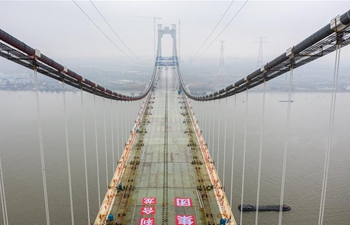SEOUL, Dec. 31 (Xinhua) -- South Korea's headline inflation hit a record low in 2019 on low demand-side inflationary pressure, welfare policies, and price fall in farm goods and oil products, statistical office data showed Tuesday.
Consumer price rose 0.4 percent this year from the previous year, after increasing 1.5 percent in 2018, according to Statistics Korea.
It was the lowest since the statistical office began compiling the data in 1965, topping the previous record low of a 0.7 percent gain tallied in 2015.
Core consumer price, which excludes volatile farm goods and oil products, added 0.9 percent this year, after gaining 1.2 percent last year.
Demand-side inflationary pressure weakened on the back of the economic slump. The finance ministry forecast that real gross domestic product (GDP), adjusted for inflation, grew 2.0 percent this year after expanding 2.7 percent in 2018 and 3.1 percent in 2017 each.
The OECD-method core price, which excludes volatile food and energy costs, rose 0.7 percent in 2019 after gaining 1.2 percent last year.
Price for agricultural, livestock and fishery products inched up 0.1 percent after climbing 3.7 percent last year.
Agricultural product price declined 3.0 percent in 2019 thanks to weather conditions favorable to farming, dragging down the overall headline inflation by 0.21 percentage points.
Oil product price contracted 5.7 percent this year on cheaper global crude oil, pulling down the overall inflation by 0.15 percentage points. The oil product price advanced 6.8 percent last year.
Public services price slipped 0.5 percent this year owing to expanded welfare policies such as the increased coverage of the public health insurance and the expansion of free school meal, free school uniform and free education.
Private services price went up 1.9 percent this year, but it was down from a 2.5 percent increase last year. The public services price added 0.2 percent last year.
Price for electricity, natural gas and tap water advanced 1.5 percent after sliding 2.9 percent in 2018. The higher utilities cost was attributed to a hike in town gas charges.
House rent fell 0.1 percent this year, after growing 0.6 percent in the previous year.
The so-called livelihood cost, which reflects cost for daily necessities, edged up 0.2 percent after increasing 1.6 percent last year.
The fresh food price, which gauges price for fruit, vegetable, fish and shellfish, plunged 5.1 percent after advancing 3.6 percent last year.
The finance ministry expected the consumer price to rise 1.0 percent next year on expectations for higher price for agricultural and oil products.
In December alone, the consumer price went up 0.7 percent compared with the same month of last year.
It was a rebound from a 0.2 percent increase in November, no change in October and a 0.4 percent fall in September respectively.
Core consumer price gained 0.7 percent in December from a year earlier. The OECD-method core price added 0.6 percent in the month.

